How To Support Emotional Regulation Using ABA Tools

Understanding Emotional Regulation in Autism Through ABA
Emotional regulation is a crucial skill for children with autism, enabling them to navigate daily challenges and social interactions with greater ease and confidence. Applied Behavior Analysis (ABA) therapy offers practical, evidence-based tools to support emotional mastery by teaching children to recognize, understand, and effectively manage their emotions. This article explores how ABA techniques can be applied to foster emotional regulation, reduce challenging behaviors like meltdowns, and improve overall quality of life for individuals on the autism spectrum.
What is ABA Therapy and Its Role in Autism Support?
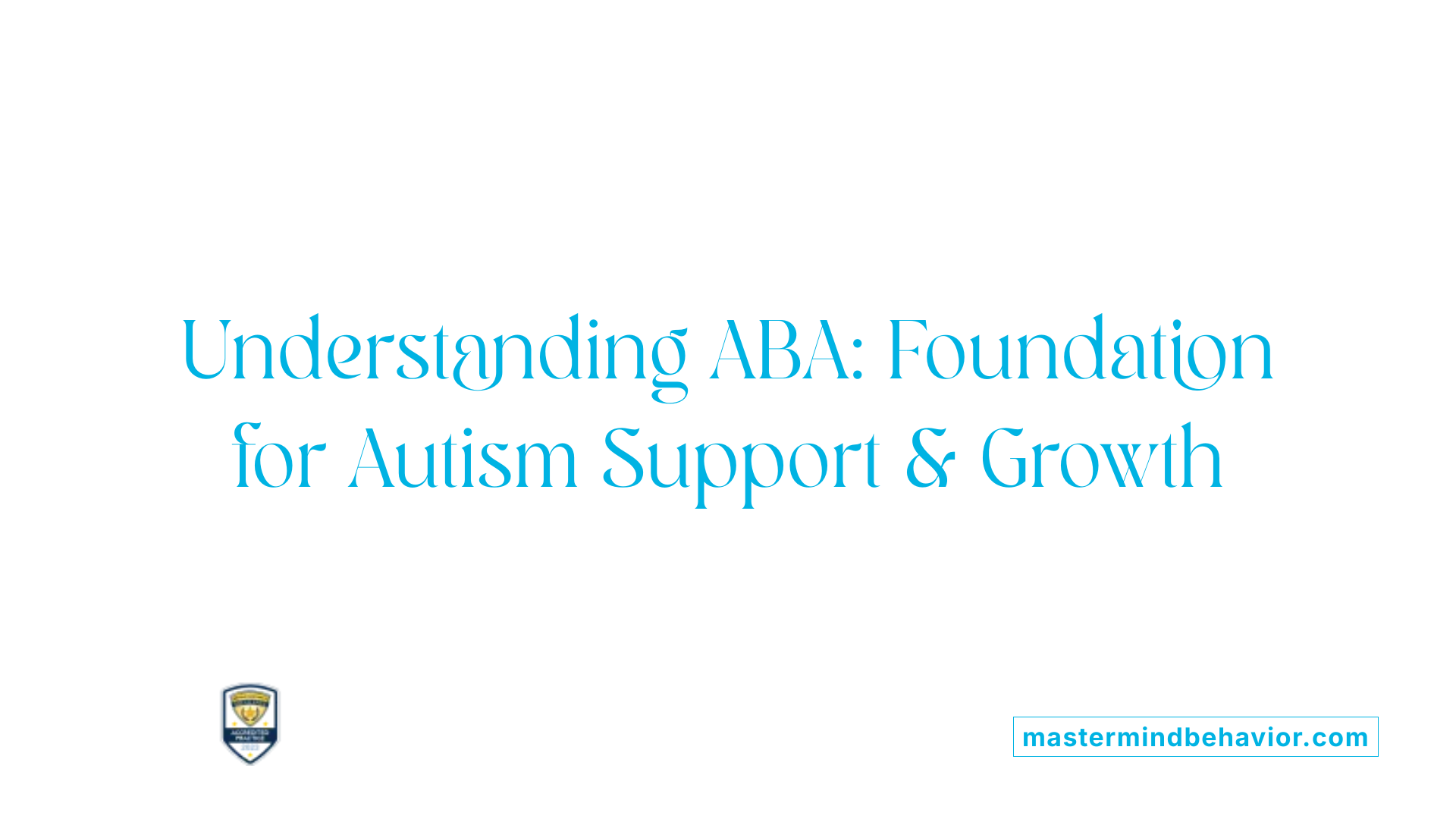
What is applied behavior analysis (ABA) therapy, and how does it help individuals with autism?
Applied Behavior Analysis (ABA) therapy is a scientific, evidence-based approach that focuses on understanding and improving behavior. It helps children and adults with autism develop important skills by breaking tasks down into manageable steps and using positive reinforcement to encourage desired behaviors.
ABA therapy begins with a detailed assessment of each child’s specific needs and challenges. This personalized approach allows therapists to create customized treatment plans aimed at enhancing social skills, communication, emotional regulation, and daily living abilities.
Early intervention with ABA is especially important. When started at a young age, it can significantly improve a child’s ability to manage emotions, reduce meltdowns, and build self-help skills, setting a strong foundation for lifelong growth.
Techniques used in ABA
Key ABA techniques include:
- Behavioral analysis: Identifying what triggers certain behaviors and learning their purpose.
- Reinforcement: Praising positive actions and providing rewards like stickers or playtime, which motivates children to use coping skills consistently.
- Teaching replacement behaviors: Introducing alternatives such as using a break card or calming objects instead of reacting negatively.
- Use of visual supports: Visual schedules and emotion charts help children recognize emotions and predict daily activities.
How ABA supports overall development
ABA therapy not only targets behavior but also promotes emotional recognition and regulation. Children learn to identify feelings using language and visuals, practice coping strategies, and communicate their needs effectively. This holistic support improves social interactions, reduces anxiety, and fosters greater independence.
By offering individualized interventions and involving caregivers in the learning process, ABA creates a consistent and supportive environment for children to thrive.
Through ongoing monitoring and adjustments, ABA ensures that each child’s unique journey towards emotional mastery and functional skills is met with patience and success.
Core Goals of ABA Therapy for Emotional Regulation

What are the main goals of ABA therapy in treating autism?
ABA therapy primarily focuses on improving various skills and managing behaviors to support children with autism in their everyday lives. The main goals include enhancing communication skills, such as helping children express and understand language effectively. It also targets improving social interactions, enabling kids to respond to greetings, engage with peers, and develop friendships.
Reducing challenging behaviors like tantrums, meltdowns, or self-injury is another major objective. These behaviors often stem from difficulties in emotional regulation, so ABA incorporates strategies to help children recognize their feelings, identify triggers, and use coping tools.
Another important goal is promoting independence by teaching daily living skills like self-care and community participation. This helps children gain confidence and self-sufficiency.
ABA is highly personalized, designing treatment plans based on each child’s unique strengths and challenges. It builds foundational abilities like attention, imitation, and appropriate adaptive responses.
How does ABA therapy enhance emotional regulation and overall quality of life?
By teaching children to recognize and label their emotions using visuals and interactive methods, ABA helps them manage feelings that can lead to outbursts or anxiety. Therapists use reinforcement techniques to encourage positive behaviors and introduce calming strategies such as deep breathing, break cards, and sensory tools.
Improving emotional regulation also enhances social skills. Better control over emotions allows children to engage more effectively with others, reducing social anxiety and increasing confidence.
Ultimately, these combined efforts through ABA therapy support a healthier, more balanced emotional state and improve the child’s quality of life, enabling greater social participation and personal success.
Techniques and Tools to Support Emotional Regulation in ABA
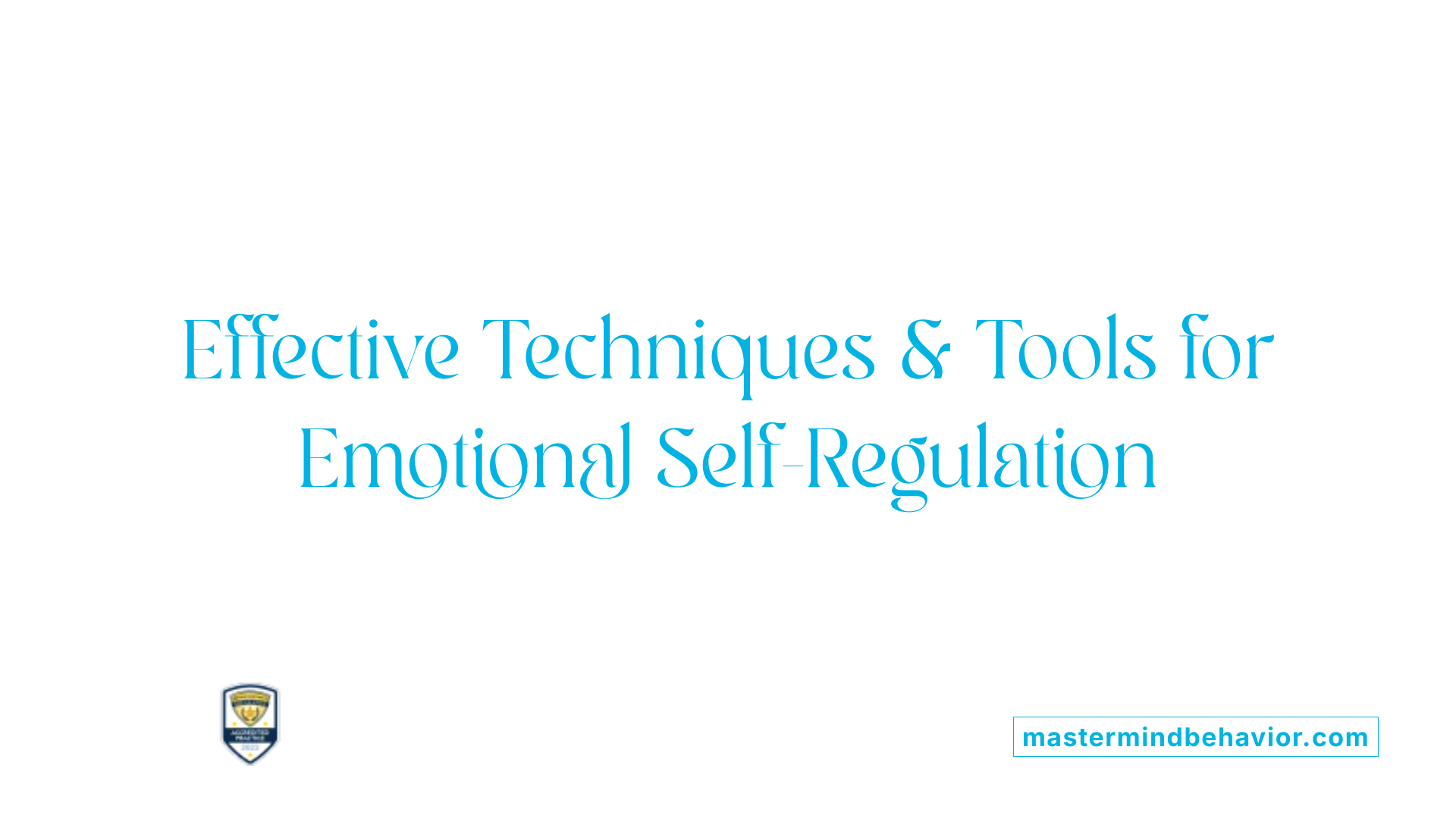
Identifying Functions of Behavior
ABA therapy begins by understanding why a child exhibits certain behaviors. By identifying the function behind behaviors—such as escape, attention-seeking, or sensory needs—therapists can tailor interventions to address the root causes effectively.
Teaching Replacement Behaviors
Once behaviors are understood, therapists introduce replacement strategies to help children express their needs or emotions constructively. Examples include teaching the use of a break card to request a pause or offering a comforting hug with a stuffed animal instead of a meltdown.
Proactive Strategies to Prevent Meltdowns
Proactive approaches are vital in ABA to minimize emotional outbursts. Visual schedules prepare children for upcoming activities, reducing anxiety. Offering choices allows children to feel more in control, lowering frustration that can lead to meltdowns.
Visual Supports and Schedules
Visual aids such as charts with facial expressions or social stories help children label and recognize their emotions. These tools enhance emotional literacy and guide children through their daily routines smoothly.
Use of Reinforcement and Natural Rewards
Reinforcement is a cornerstone of ABA. Praising appropriate emotional responses and providing natural rewards, like extra playtime or stickers, motivate children to practice emotional regulation skills consistently.
Creating Personalized Calming Toolboxes
Developing a calming toolbox tailored to the child's sensory needs supports self-regulation during high-emotion moments. Items like noise-canceling headphones, weighted lap pads, sensory bottles, and calming visuals offer comfort and aid in managing emotions effectively.
Role of Therapists and Caregivers in Emotional Regulation
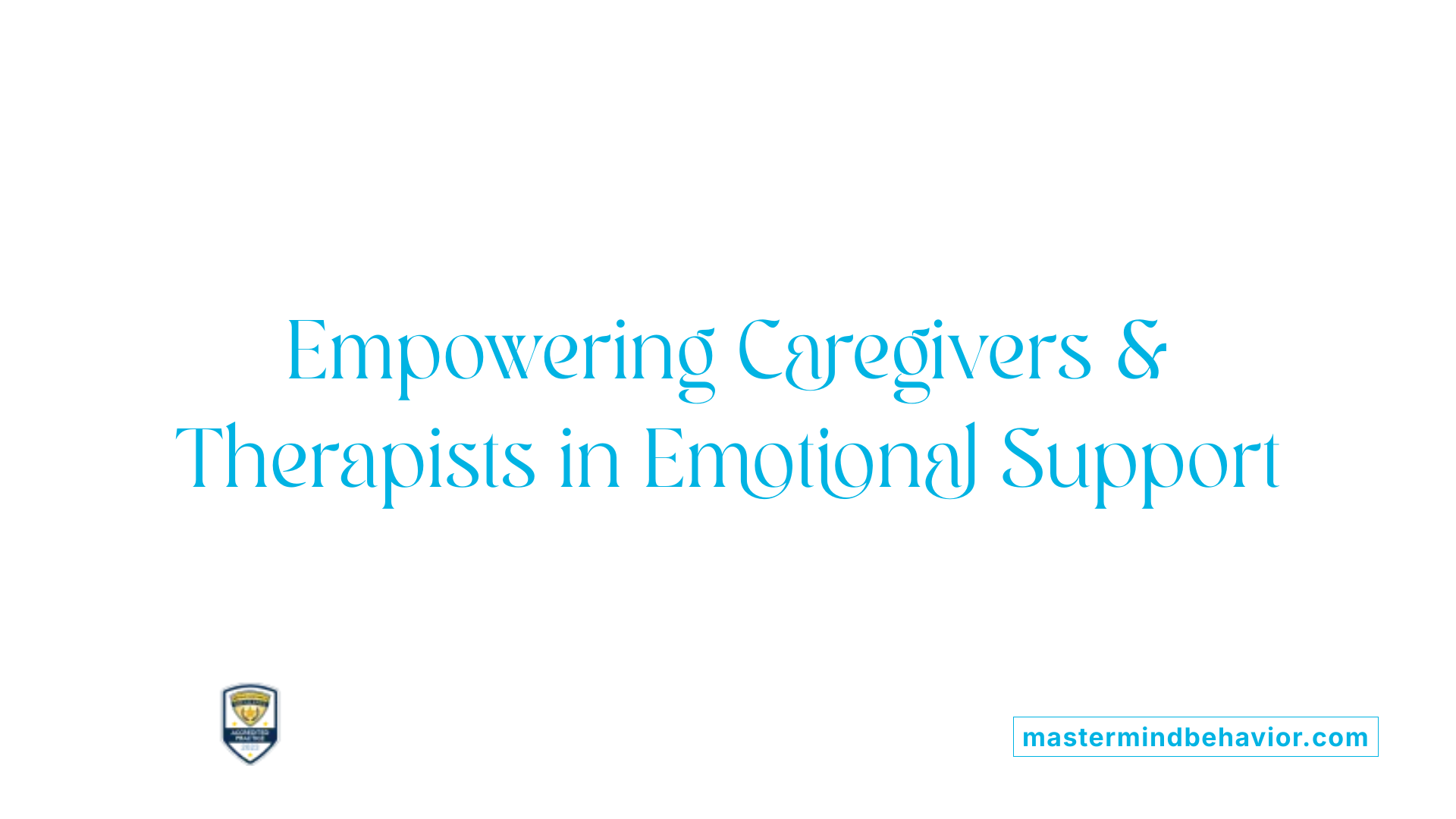
Who Typically Provides ABA Therapy for Individuals with Autism?
ABA therapy is typically provided by trained professionals such as Board Certified Behavior Analysts (BCBAs) and Registered Behavior Technicians (RBTs). BCBAs are graduate-level clinicians who design and supervise individualized treatment plans with evidence-based strategies tailored to each child's unique needs. RBTs assist BCBAs by delivering targeted interventions focused on skill building and behavior reduction. This team approach ensures comprehensive support for children with autism.
How Do Therapists Model Emotional Regulation?
Therapists play a critical role by modeling emotional regulation themselves. Demonstrating calm behavior and effective coping strategies helps children understand and imitate healthy ways to manage emotions. This modeling forms an essential foundation for teaching children how to recognize feelings and respond appropriately.
What is the Collaborative Approach Between Therapists and Families?
Collaboration between therapists and families is vital for success. Therapists work closely with caregivers to develop personalized ABA plans and share effective strategies. This partnership allows for consistent support and reinforcement across home and therapy settings, enhancing emotional growth.
How Are Skills Generalized Across Different Settings?
ABA therapists focus on generalizing emotional regulation skills across multiple environments such as home, school, and community. They utilize consistent routines and communication between all involved adults to help children transfer skills learned in therapy to real-life situations, promoting independence and confidence.
How Can Caregivers Support Emotional Vocabulary and Coping Strategies at Home?
Caregivers are encouraged to reinforce emotional vocabulary and coping tools at home by using visual aids like emotion charts and encouraging use of calming tools from the child's personalized toolbox. Consistent practice of strategies such as deep breathing or requesting breaks helps children solidify their self-regulation abilities outside therapy sessions.
This team-driven, collaborative approach ensures that children with autism receive continuous and tailored support from both ABA professionals and their families, fostering lasting improvements in emotional regulation.
Measuring Progress and Effectiveness in ABA Emotional Support
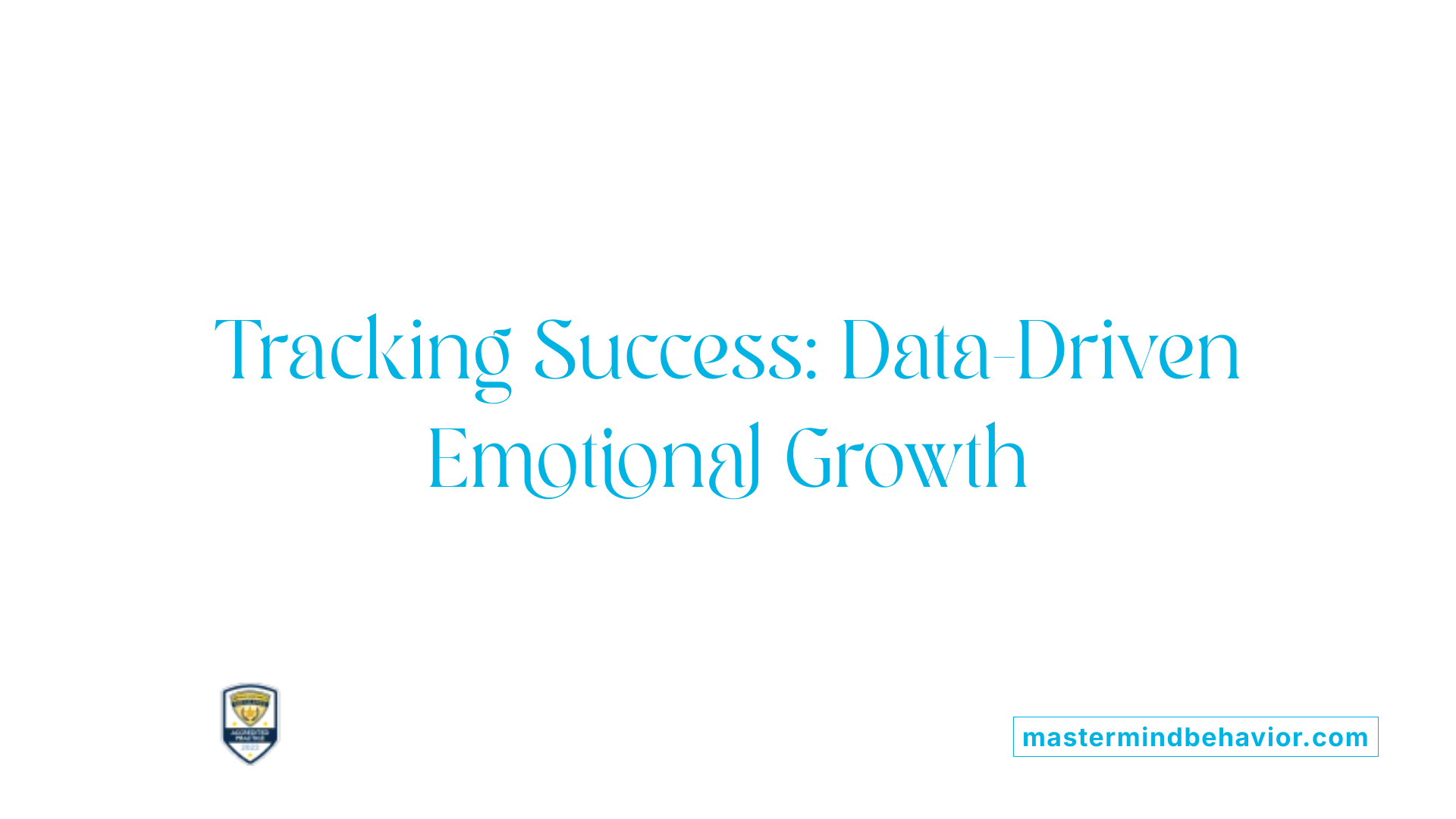
How is the effectiveness of ABA therapy measured?
Effectiveness in ABA therapy is evaluated through systematic data collection and careful progress tracking. Therapists record specific behaviors and skills using methods like frequency counts and duration recordings, which are then graphed to visually track improvements over time. This continuous monitoring allows for clear insight into the child’s development in emotional regulation.
What methods are used to track communication and social skills improvements?
Evaluations focus on improvements in communication abilities, such as increased use of words, signs, or assistive technology to express emotions and needs. Social skills are assessed through measures like better eye contact, social reciprocity, and engagement in turn-taking games or social stories, reflecting enhanced emotional understanding and interaction.
How are interventions adjusted based on data?
The behavioral data collected guides therapists in modifying the intervention plan. If progress toward goals plateaus or declines, strategies are adapted—this might include introducing new coping tools, changing reinforcement schedules, or increasing environmental supports. This adaptive approach ensures therapy remains personalized and effective.
How do treatment intensity and duration impact outcomes?
Treatment intensity, often measured in hours per week, and the overall duration of therapy influence how quickly and robustly emotional regulation skills develop. Longer and more frequent sessions typically support stronger gains, as consistent practice and reinforcement deepen learning.
What are indicators of successful emotional regulation improvement?
Successful outcomes include observable reductions in meltdowns, increased ability to recognize and label feelings, use of coping strategies such as requesting breaks or deep breathing, and enhanced social engagement with peers and adults. These changes contribute to greater emotional well-being and confidence.
| Focus Area | Measurement Methods | Description |
|---|---|---|
| Emotional regulation skills | Frequency counts, duration, visual charts | Tracks instances of emotional self-regulation behaviors |
| Communication | Language use, assistive tech, social cues | Measures ability to express needs and emotions |
| Social skills | Eye contact, social reciprocity, turn-taking | Observes quality of interactions |
| Intervention adjustment | Behavioral data analysis | Informs modifications to enhance therapy effectiveness |
| Treatment parameters | Hours per week, length of therapy | Correlates with speed and extent of progress |
| Outcome indicators | Reduction in meltdowns, coping skills usage | Reflects real-world emotional and behavioral improvements |
Dispelling Common Misconceptions About ABA Therapy

Are There Any Common Misconceptions About ABA Therapy?
A frequent misunderstanding is that ABA therapy is primarily punishment-driven or rigid. Contrary to this belief, modern ABA focuses on positive reinforcement and uses individualized, respectful approaches tailored to each child's unique needs. This therapy aims to build essential skills such as communication, emotional regulation, and social interaction, rather than trying to "fix" autism.
ABA is grounded in scientific research and is versatile enough to apply across various settings, including home and school. Therapists design personalized interventions that evolve over time, ensuring progress while prioritizing the child's autonomy and emotional well-being.
By emphasizing natural rewards like praise or preferred activities, ABA promotes positive behaviors without relying on aversive techniques. The therapy respects individual emotions, helping children recognize, understand, and express their feelings effectively.
Ultimately, ABA therapy supports emotional regulation and independence, dispelling myths about it being inflexible or harmful. Its evidence-based, compassionate framework fosters growth and confidence in children with autism.
Comprehensive Strategies for Long-Term Emotional Mastery

How does emotional literacy training and mindfulness contribute to emotional regulation?
Emotional literacy training helps children with autism recognize and name their feelings using visuals, facial expression charts, and language. Mindfulness techniques, such as deep breathing and relaxation exercises, promote awareness of emotional states and help manage anxiety or sensory overload. These foundational skills empower children to identify triggers and respond calmly.
What role does functional communication development play?
ABA therapy emphasizes building strong functional communication skills, enabling children to express needs and emotions through words, signs, or assistive technology. By teaching coping strategies like asking for help or requesting breaks, children reduce behavioral outbursts and learn healthier emotional expression.
How are social stories and perspective-taking used?
Social stories and perspective-taking exercises provide practical scenarios to understand social cues and diverse feelings. These techniques improve social-emotional skills by illustrating appropriate reactions and encouraging empathy, which supports better social interactions and confidence.
Why is tailoring tools to individual triggers important?
Personalized calming toolboxes containing sensory items such as noise-canceling headphones and weighted lap pads are essential. ABA therapists assess each child's specific triggers and needs, customizing strategies like visual schedules, break cards, and preferred comfort items. This individualized approach makes coping more effective during heightened emotional moments.
What is the significance of patience and gradual progress?
Developing emotional regulation is a step-by-step journey requiring consistent practice and support across home, school, and therapy settings. Caregivers' modeling of emotional control and reinforcing coping tools foster growth over time. Recognizing that each child progresses uniquely helps maintain patience and realistic expectations.
How does a healthy lifestyle support emotional well-being?
A solid foundation of proper diet, regular exercise, and sufficient sleep enhances overall emotional health. When combined with ABA strategies, these lifestyle factors improve the child's ability to self-regulate, remain calm, and engage socially, contributing to long-term emotional mastery.
Achieving Emotional Regulation Through ABA: A Collaborative Pathway
Supporting emotional regulation in children with autism using ABA therapy requires a personalized and collaborative approach involving skilled therapists, informed caregivers, and consistent reinforcement across environments. Through a blend of behavior analysis, positive reinforcement, and practical tools such as visual supports and calming toolkits, ABA fosters self-awareness and equips children with coping strategies to manage their emotions effectively. Progress is gradual and unique to each child, highlighting the need for patience and ongoing adjustment. By dispelling myths and embracing evidence-based techniques, ABA therapy stands as a vital approach to enhancing emotional well-being, social confidence, and overall quality of life for individuals on the autism spectrum.
References
- ABA Therapy for Emotional Regulation: From Meltdowns to ...
- Asperger's Emotional Regulation: Strategies and Insights
- How Does ABA Help with Emotions in Autism?
- How To Teach Emotional Regulation In Autism | ART
- When Big Feelings Show Up: How ABA Therapy Supports ...
- Applied Behavior Analysis (ABA)
- Applied Behavior Analysis (ABA)
- Applied Behavior Analysis (ABA) for Children With Autism
- Board Certified Behavior Analysts (BCBA)
Recent articles
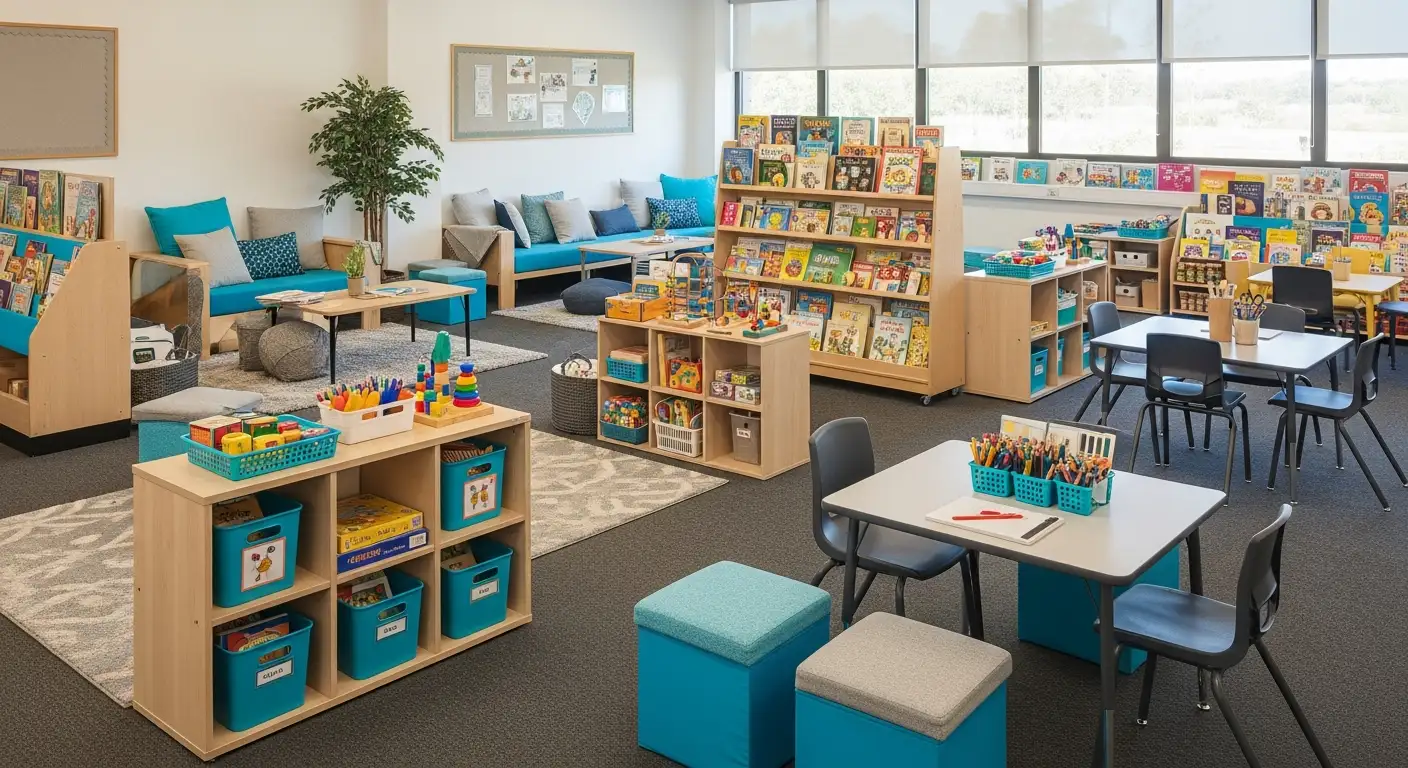
How ABA Therapy Improves Behavior In Inclusive Classrooms
Transforming Inclusive Education: The Role of ABA Therapy in Behavior and Skill Development

Teaching Personal Hygiene Routines Through ABA Therapy
Empowering Independence: How ABA Therapy Transforms Hygiene Skills in Children with Autism

The Importance Of Generalization In ABA For Long-Term Outcomes
Maximizing Life Skills Through Effective Generalization in Autism Therapy

How Functional Communication Training Reduces Problem Behaviors
Transforming Challenging Behaviors Through Functional Communication Training

ABA Therapy For Teaching Coping Strategies During Stressful Situations
Harnessing ABA Therapy to Equip Individuals with Autism for Stressful Moments

How ABA Therapy Builds Foundations For Independent Adulthood
Unlocking Potential: ABA Therapy's Role in Nurturing Independent Adulthood



